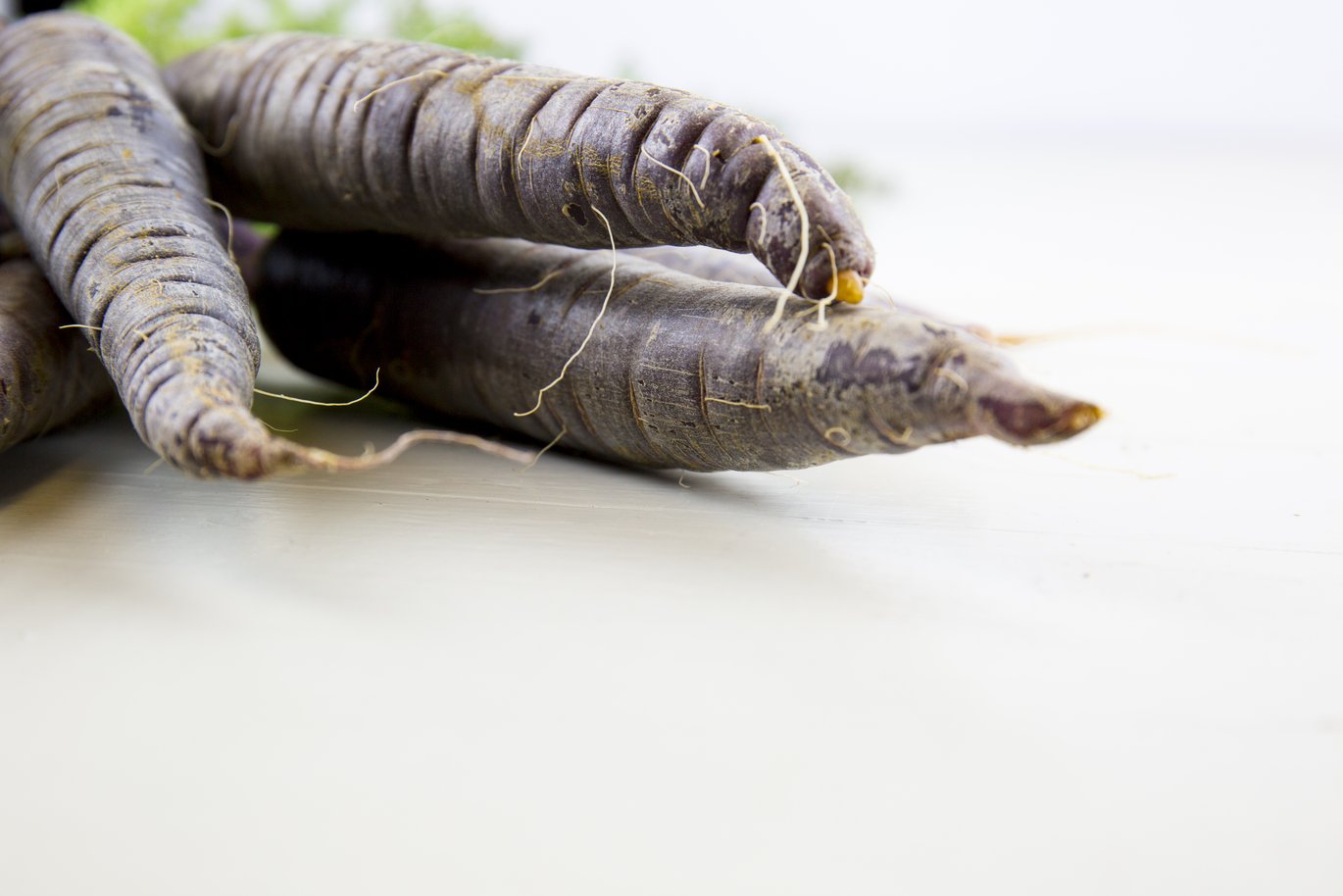Carrots can replace synthetic dyes in foods
A number of synthetic dyes in foods are suspected of having unwanted side effects especially for children. For this reason, over the past ten years, the EU has required products containing selected synthetic dyes to have clear warning labels on the packaging. This has resulted in a great demand for natural dyes worldwide. Now researchers from Aarhus University have found a method that can turn ordinary orange carrots black from which it is possible to extract dyes for food. It creates new opportunities in the production of natural dyes for the food industry as a substitute for the synthetic ones.

The food industry is experiencing an increased demand for natural dyes instead of synthetic after several studies have shown that synthetic dyes in foods can have negative effects for children in particular. As a result, in 2010, the EU demanded warning labels on foods containing selected synthetic dyes and more and more food manufacturers wish to replace synthetic dyes with natural ones. For this reason, researchers from the Department of Agroecology at the University of Aarhus have developed a method that can obtain larger amounts of the natural dye anthocyanin, which is found in black carrots, among other things. The development is a part of a five-year Innovation Fund project.
“Anthocyanins are a group of blue, red and purple water-soluble color pigments found in plants - mainly in fruit. They will be able to replace the synthetic dyes in many different types of food, so the industry is naturally very interested in anthocyanin. However, there are challenges in getting the dyes manufactured both in terms of quantity and in terms of durability and different color patterns. We also know that there is a high concentration of anthocyanins in black carrots, but black carrots are difficult to grow in large quantities as they are very small, tend to flower and have a low resistance to disease and bad weather conditions,” explains Professor Henrik Brinch-Pedersen from the Department of Agroecology.
Changing orange carrots into black
Unlike black carrots, ordinary orange carrots can be grown in large quantities and they are much more resistant. Therefore, the researchers found it relevant to take a closer look at why the common carrot is orange and not black or purple like its ancestors.
“Originally, carrots were not orange or white, as we know them today, they were purple or black. At some point during a selection process, they have lost the ability to produce anthocyanins and therefore they have lost the purple color. We were interested in investigating how it happened and whether orange carrots still have the mechanics of producing the dye latent in it,” says Henrik Brinch-Pedersen.
Using purple edible carrots, which are usually purple on the outside but orange inside, the researchers were able to identify the various genes that were found in the purple part but were missing in the orange.
“We simply separated the carrot and looked at the carrot tissues that were purple and those that were not. Here we found how the synthesis of dyes in carrots works and what has been lost in the orange carrots. And it turns out that the orange carrots actually have the entire machinery for making dyes, ”Henrik Brinch-Pedersen says.
The researchers have simply found a method that can activate the anthocyanin synthesis so that the orange carrot can turn black. In this way, it will be possible to grow black carrots with the high yields and resistance of the orange carrots to produce natural dyes for the food industry.
The method has subsequently been patented in collaboration with Christian Hansen Holding A/S.
Behind the research
Collaborators: Department of Agroecology at Aarhus University, Center for GeoGenetics at University of Copenhagen and Christian Hansen Holding A/S. |
Funding: Innovation Fund (Grant. No. 4105-00006B) |
Conflicts of Interest: None |
Read more: You can read the publication "Cyanidine based anthocyanin biosynthesis in orange carrot is restored by expression of AmRosea1 and AmDelila, MYB and bHLH transcription factors." It is written by Shrikant Sharma, Inger B. Holme, Guiseppe Dionosio, Miyako Kodama, Tsaneta Dzhanfezova, Bjarne Joernsgaard and Henrik Brinch-Pedersen. |
Contact: Professor Henrik Brinch-Pedersen, Department of Agroecology, University of Aarhus. Tel: +45 8715 8268. Email: hbp@agro.au.dk |
